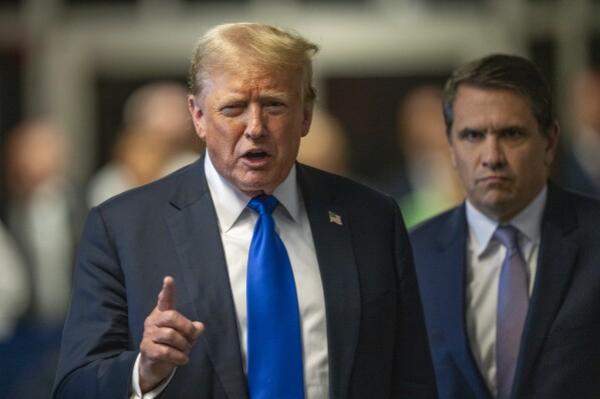The African Continental Free Trade Area (AfCFTA) is into its fourth month of trading, having kicked off as of January 1st, 2021. It was created by the African Continental Free Trade Agreement among 54 of the 55 African Union nations. This free-trade area is the largest in the world in terms of the number of participating countries since the formation of the World Trade Organization. Accra, Ghana serves as the Secretariat of AfCFTA with South Africa’s Wamkele Mene appointed as the Secretary General.
Most AU member states acted fast at signing the agreement while Benin, Botswana, Eritrea, Guinea-Bissau, Nigeria, and Zambia initially express their unwillingness to sign the pact. The President of Nigeria Muhammadu Buhari was particularly reluctant to join if it hurt Nigerian entrepreneurship and industry. However, on July 7th, 2019, Nigeria and Benin committed to signing the Africa Free Trade Pact at the 12th extraordinary session of the assembly of the union on AfCFTA; leaving Eritrea as the only nation out of the 55 African Union Member States not to sign up for the deal.
The AfCFTA is the African continent’s most ambitious integration initiative, embedded in the Agenda 2063 of the African Union, whose main objective is to create a single continental market for goods and services with free movement of people and investments, thus expanding intra-African trade across the continent, thereby enhancing competitiveness and supporting economic transformation in Africa.
The AfCFTA is expected to increase intra-Africa trade from an existing level of about 13% to 25% or more through better harmonisation and coordination of trade liberalisation. This will be driven forward by the complementary Single African Air Transport Market and the Protocol on Free Movement of Persons. This budding and wide-reaching trade area will be watched closely given its scope, size, and potential development impacts, along with what it means for existing regional communities and trading ties with other partners.
The new market, created under the African Continental Free Trade Area (AfCFTA) agreement is estimated to be as large as 1.3 billion people across Africa, with a combined gross domestic product (GDP) of $3.4 trillion and “this has a potential of lifting up to 30 million Africans out of extreme poverty”, according to the World Bank. In the same vein, Wamkele Mene, the Secretary-General of the AfCFTA Secretariat, at the virtual launch event also emphasised that “This is not just a trade agreement, this is our hope for Africa to be lifted up from poverty,” In addition, the Chairperson of the African Union Commission, Moussa Faki Mahamat recalled that “in 1963 the founders of the Organization of African Unity had a vision of creating an Africa common market”, thus, the flagging off of AfCFTA marks a dream come true.
This trade agreement is expected to boost intra-African trade, promote industrialization, create job, and improve competitiveness of African industries on the global stage. Other benefits of this agreement is its potential capacity to increase Africa’s income by $450 billion by 2035 (a gain of 7 percent) while adding $76 billion to the income of the rest of the world as well as amplify Africa’s exports by $560 billion, mostly in the manufacturing sector. The pact will promote lucrative wages for both skilled and unskilled workers—10.3 percent for unskilled workers, and 9.8 percent for skilled workers while also empowering women by improving their access to trade opportunities. Since women make up the largest share of informal traders; representing 70 per cent to 80 per cent in some African countries, their active involvement is highly paramount.
There is no gainsaying the fact that this ambitious project enjoys considerable continental support. But despite the opportunities, the challenges need to be addressed. Fears of significant tariff revenue losses and an uneven distribution of costs and benefits are among the main obstacles to the continent';s integration. Despite low levels of intra-Africa trade, tariff revenue is still an important source of government revenue, and the tariff remains an important measure to reduce import competition and so protect domestic industry. When there are fewer tariffs in place, then the government will lose funds. Furthermore, market consolidation may arise when smaller firms are exposed to stiffer competition.
There can also be regulatory problems that occur as global businesses attempt to get a piece of the pie. Free trade agreements rarely accommodate the protection of intellectual property of members or participating nation as patents, processes, and other inventions, including branding, graphic displays, and imaging, are sometimes infringed upon in the free trade environment.
Indiscriminate exploitation of a nation’s natural resources in other regions where restrictions or regulations are not as stringent may arise. Cheapest methods of creating goods or rendering services become the point of emphasis leading to strip mining, clear-cut logging, and other problematic behaviours.
However, the pros of AfCFTA transcends the cons lower costs for imported raw materials and intermediate inputs increases competitiveness of downstream producers and promotes the generation of regional value chains, lowers trade costs and allows consumers to access a greater variety of products at lower prices. Trade liberalization also allows firms to access a large continental market and gain from economies of scale. In the long run, increased competitive pressures may improve the efficiency of indigenous African firms. While most of the potential benefits of trade liberalization accrue in the long run, short-run structural change through the relocation of labour, capital and other factors of production may entail costs of adjustment.
Still, the promises of a free trade area are transformative and achieving the gains from AfCFTA is especially important due to the COVID-19 pandemic, which is expected to cause up to $79 billion in output losses in Africa. COVID-19 has caused major disruptions to trade across the continent, including trade of critical goods such as medical supplies and food. Therefore, by increasing regional trade, lowering trade costs and streamlining border procedures, the full implementation of AfCFTA would help African countries increase their resilience in the face of future economic shocks and help usher in the kind of deep reforms that are necessary to enhance long-term growth of creating the “Africa We Want” in line with the African Union Agenda 2063.






















